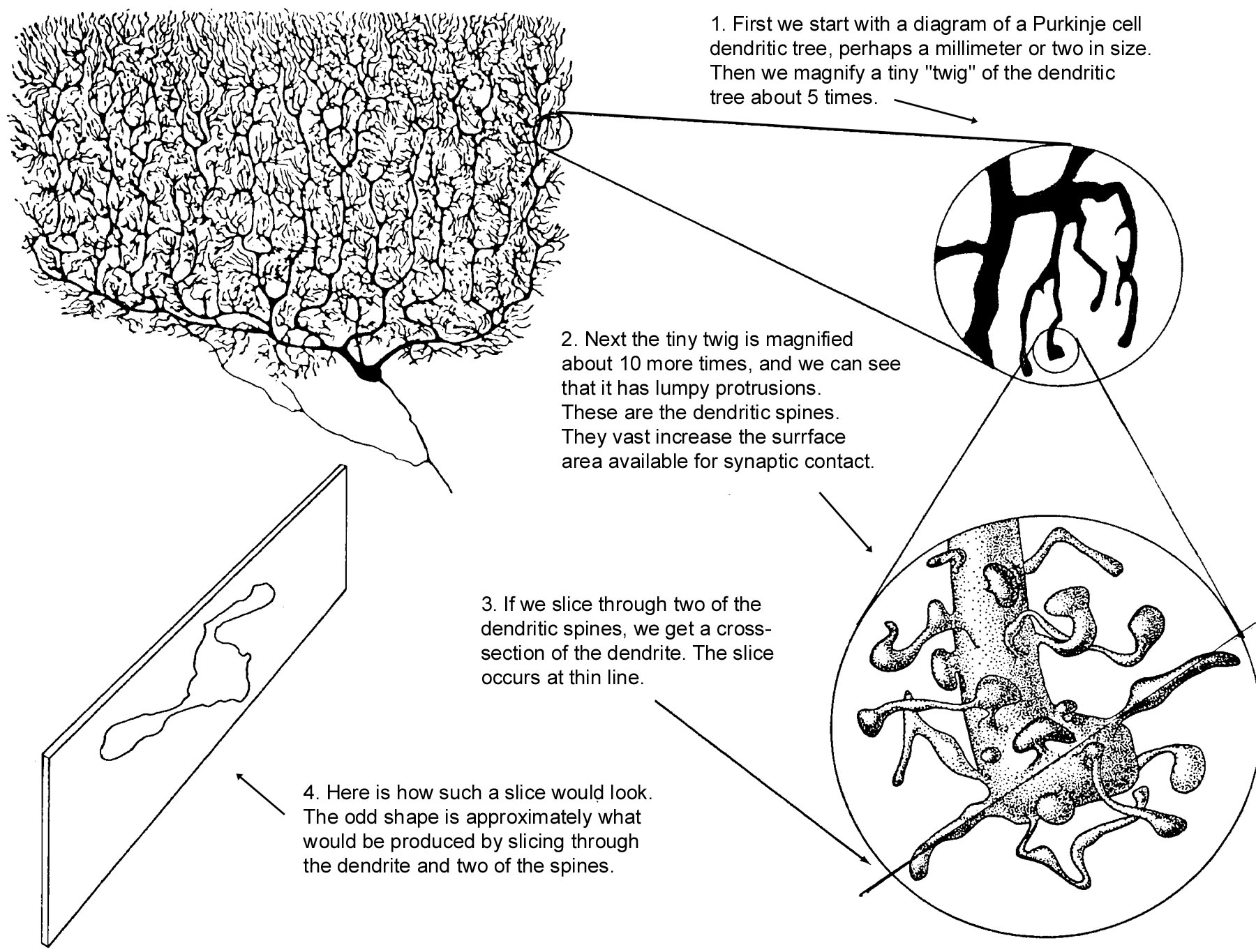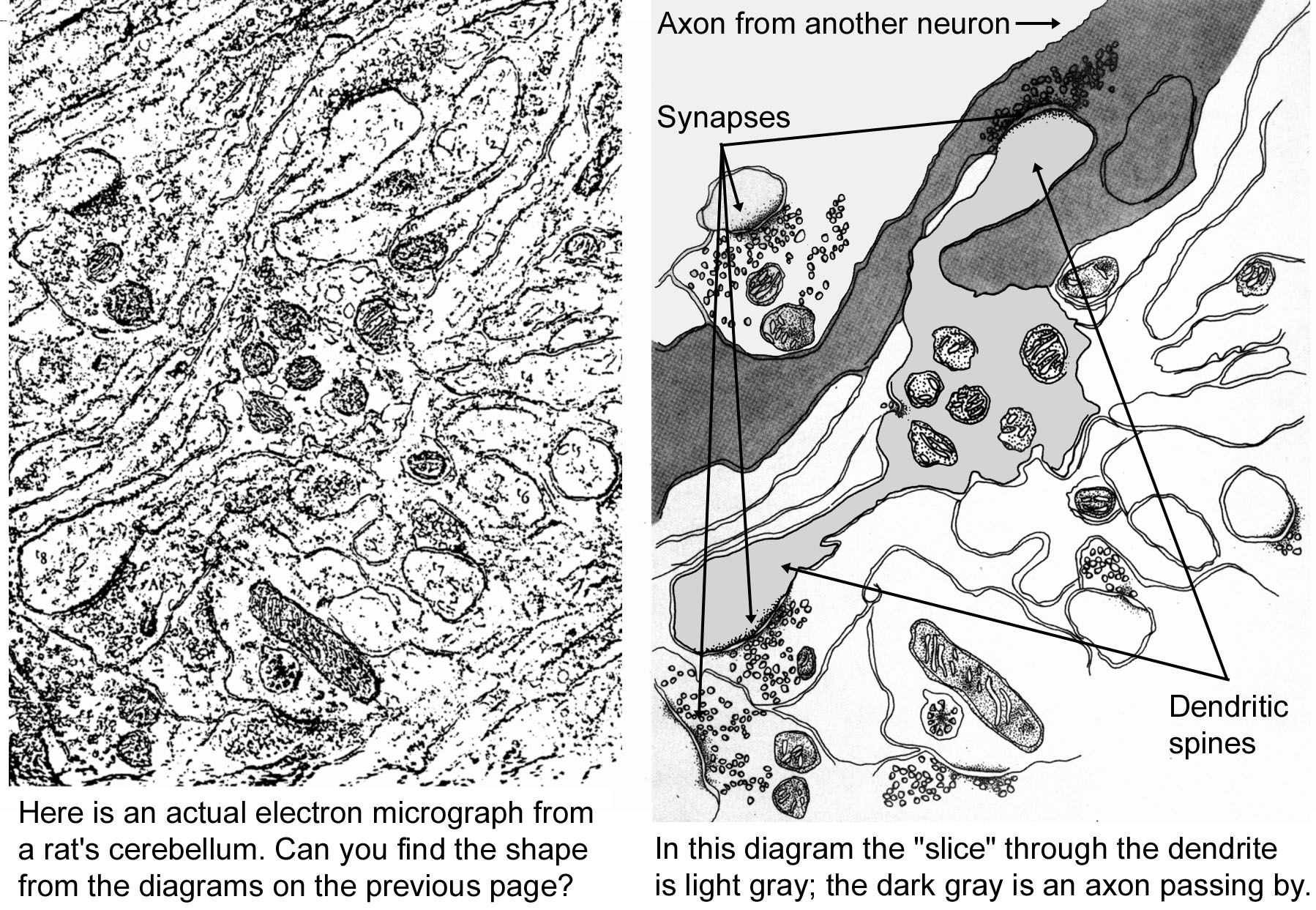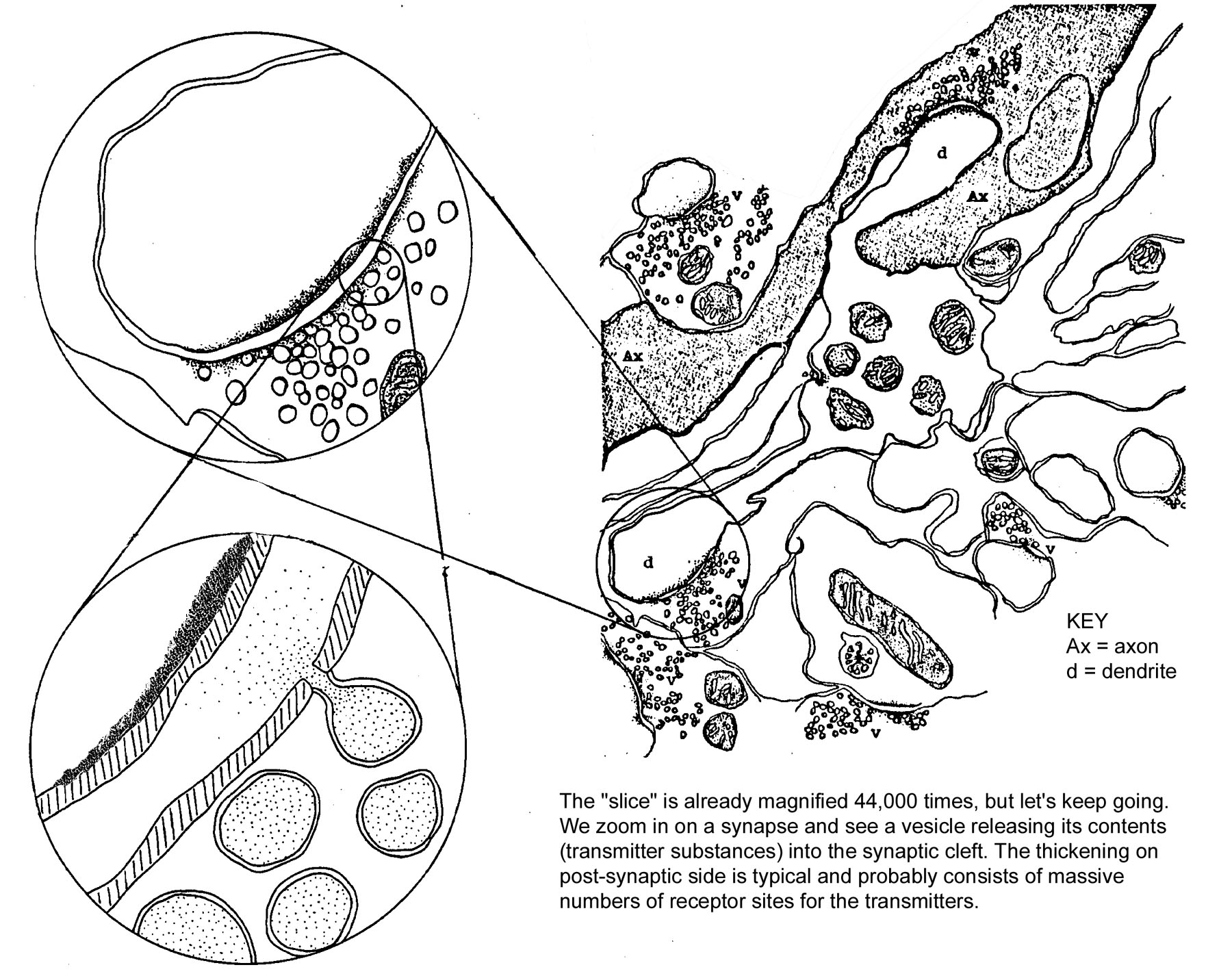Copyright © 2007-2018 Russ Dewey
A Close Look at a Real Neuron
A series of "zooms" by the talented medical illustrator Sue Sanford can help to convey the true complexity of a neuron. We will start with a single Purkinje cell then zoom in on a single twig of the vast dendritic tree.
What sort of cell is shown here?

An electron micrograph shows a portion of a dendritic tree, ending in 44,000x magnification

A real electron micrograph (left) and a diagram to help interpret it (right)

Continuing to zoom, we see vesicles releasing transmitters into a synaptic cleft
During the quiet revolution, images from the electron microscope flooded neuroscience laboratories with data. Perhaps you can see why the revolution remained quiet. The complexity revealed under an electron microscope is almost overwhelming.
Most beginning students are introduced only to the classic motor neuron. Students may be left with the impression that neurons are relatively simple units connected in a series, like beads in a necklace or links in a chain.
What misleading impression is received by many students?
The truth is above. Each neuron is immensely complex. Adjacent neurons are intertwined and interconnected in dense, detailed ways. Add the exchange of biomolecules and other findings from the quiet revolution, and the complexity boggles the mind.
If this complexity is found in one twig of one dendritic tree, in one cell among the billions in the brain, then you can see why scientists say the brain is the most complex matter in the known universe.
Write to Dr. Dewey at psywww@gmail.com.
Don't see what you need? Psych Web has over 1,000 pages, so it may be elsewhere on the site. Do a site-specific Google search using the box below.
